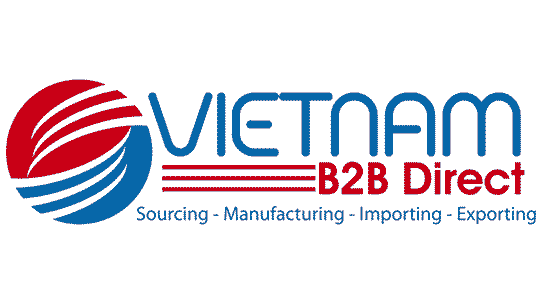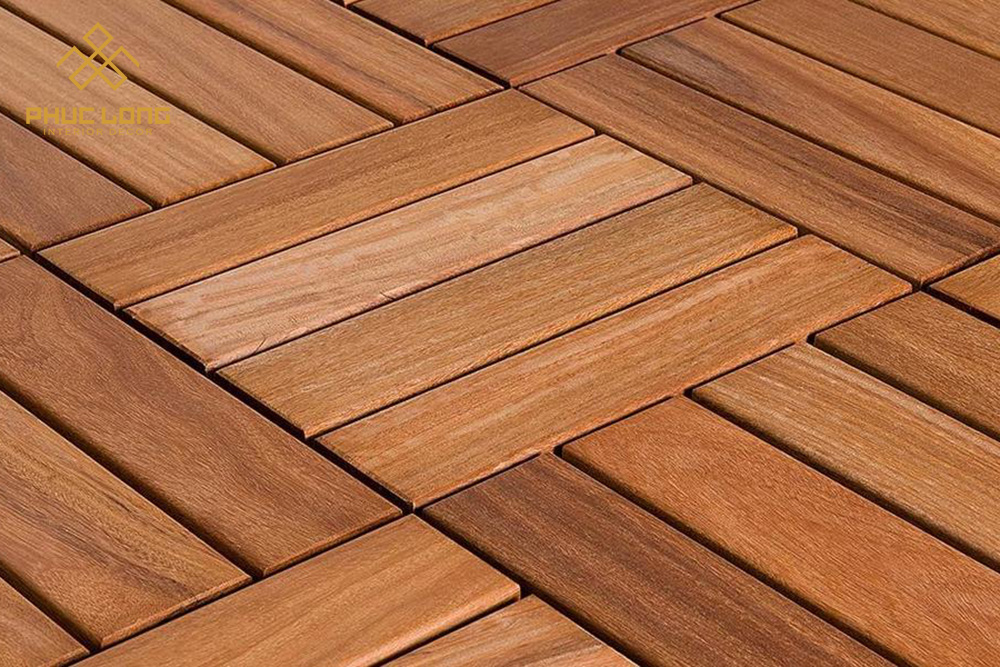To find a butcher block in Vietnam, explore local markets, kitchenware stores, and online platforms. Consider custom options from local craftsmen or woodworking shops. Seek recommendations from locals or expats for reliable sources.
In recent decades, there has been a surge in the popularity of butcher blocks, attributed to changing preferences favoring natural and rustic aesthetics. It’s evident that butcher blocks seamlessly align with this trend, establishing themselves as a crucial material in the construction of kitchen countertops in the early twenty-first century.
However, when it comes to market share, butcher blocks trail behind more prevalent materials like marble, granite, and quartz. In 2016, for instance, no more than 8% of U.S. homeowners chose butcher blocks for their countertops.
The current surge in their popularity suggests that butcher blocks are poised to become more widely utilized in the coming decades, thanks to their affordability, distinctive aesthetic appeal, and durability when appropriately cared for. Opting for butcher blocks is a favorable choice if you desire a countertop that will maintain its stylish appeal well into the next few decades. Their enduring popularity is unlikely to wane with evolving cultural and artistic trends.
The importance of finding a reliable butcher block factory in Vietnam
Discovering a trustworthy butcher block factory in Vietnam is paramount to ensuring the quality and authenticity of your kitchen essentials. With the increasing demand for butcher blocks, the importance of finding a reliable manufacturing source cannot be overstated.
A dependable factory not only guarantees the use of premium materials but also ensures meticulous craftsmanship, resulting in durable and visually appealing products. This blog delves into the crucial aspects of locating a reliable butcher block factory in Vietnam, providing insights into research methods, communication strategies, and quality assurance measures.
Elevate your kitchen experience by understanding the significance of choosing the right factory for your butcher block needs in Vietnam.
Overview of what the blog will cover
Embark on a comprehensive exploration with our blog, as we unveil key insights into the world of butcher block manufacturing in Vietnam. This insightful guide is designed to cover a spectrum of crucial topics, from understanding the intricacies of butcher blocks and their types of wood to the advantages of sourcing from Vietnam.
We delve into effective research strategies, communication nuances, and quality assurance measures when selecting a factory. Uncover the cultural and environmental influences shaping craftsmanship in Vietnam, and gain valuable tips on negotiating favorable terms and navigating logistics.
Whether you’re a homeowner seeking a stylish kitchen upgrade or a business owner looking for a reliable supplier, our blog is your go-to resource for navigating the intricate landscape of finding the ideal butcher block factory in Vietnam.
Understanding Butcher Blocks
Brief explanation of what butcher blocks are and their uses
A butcher block, reminiscent of historical cutting surfaces in butcher shops, is a thick wooden tabletop or countertop with end or edge grain positioned for unique strength and appearance. End grain blocks, constructed from square wood pieces, present a robust checkerboard pattern, while edge grain blocks feature a striped look. Professional butcher blocks, thicker than those for home kitchens, ensure durability and can be easily renewed through sanding. Common woods used include Sugar Maple, Teak, and Walnut, with a non-toxic oil finish for surfaces used in food preparation or cutting.
Popular types of wood used for butcher blocks
The diverse world of butcher block materials with a focus on the popular types of wood used for these versatile surfaces. Among the most prevalent choices is birdseye maple, commonly known as rock maple, offering a blend of durability and aesthetic appeal for butcher block tables and cutting boards.
While maple stands out, it’s essential to note that various hardwoods can be employed for these purposes. However, caution is advised, as certain hardwoods, like walnut, contain sap chemicals that may trigger allergic reactions upon contact.
The key to enhancing the strength of butcher blocks lies in the strategic construction, where blanks of wood are glued together, showcasing the end grain. This unique method ensures that when cutting on the board, users engage with the longest strands of wood, cutting across the ring structure of the wood surface for optimal strength and longevity.
Key considerations when choosing a butcher block
Countertops play a significant role as a prominent design element, occupying a substantial portion of a room’s space. When choosing countertop materials, factors such as cost, durability, and color become pivotal considerations. Join us as we delve into the comprehensive journey of countertops, covering everything from initial planning to examining the advantages and disadvantages of today’s most sought-after choices.
Suitable Countertop
When strategizing your countertop selection, take into account the entirety of the room and its various components. Opt for a surface material that harmonizes seamlessly with the adjacent cabinets, flooring, and other integrated design elements within the space.
Additionally, ensure that the chosen countertop complements the overarching architectural style of the home, creating a cohesive and aesthetically pleasing environment.
Suitable Lifestyle
A suitable lifestyle butcher block adapts seamlessly to your daily routines, offering a balance between functionality and aesthetic appeal. The first factor that I considered when choosing my kitchen butcher block at Hoang Thong was my lifestyle. Whether you’re a culinary enthusiast seeking a durable and stylish addition to your kitchen or a homeowner aiming for a warm and inviting atmosphere, finding the right butcher block tailored to your lifestyle is paramount.
Suitable for Cleaning
Effortless maintenance is key when it comes to cleaning butcher block surfaces. Ensuring a hygienic and pristine environment in your kitchen is simplified with butcher blocks that are designed for easy cleaning. These surfaces are typically low-maintenance, allowing for quick and effective cleanup after food preparation.
The ideal butcher block for cleaning is resistant to stains and can be easily sanitized, promoting a healthy cooking environment. Join us in discovering the convenience and practicality of butcher blocks that make cleaning a breeze, providing you with a functional and sanitary kitchen space.
Suitable for Durability
When it comes to durability, not all butcher blocks are created equal, but finding one that stands the test of time is essential. A truly durable butcher block is crafted from high-quality hardwoods like maple, teak, or walnut, known for their strength and resilience.
The construction method, often involving gluing together blanks with the end grain exposed, contributes significantly to its robustness. This ensures that the butcher block can withstand the rigors of daily use, from chopping and slicing to meal preparations. Explore the world of durable butcher blocks that go beyond mere functionality, providing a long-lasting and reliable foundation for your kitchen activities.
Suitable Budget
Navigating a budget-friendly kitchen upgrade is made easy with butcher blocks that cater to cost-conscious consumers. A butcher block suitable for budget considerations strikes a balance between affordability and quality. Opting for cost-effective hardwoods and efficient manufacturing processes, these budget-friendly options provide a wallet-friendly alternative without compromising on essential features.
Explore the realm of economically sound butcher blocks that not only meet your financial constraints but also offer a durable and stylish solution for enhancing your kitchen space. From meal preparations to daily cooking activities, discover how a budget-friendly butcher block can be the perfect addition to your culinary haven.
Why Vietnam?
Overview of Vietnam’s reputation in manufacturing
Vietnam serving as an attractive destination for numerous global manufacturers due to its cost-effectiveness and superior quality standards. Positioned strategically, it acts as a prime export hub to Southeast Asian nations, the United States, and Europe.
The appeal of Vietnam lies in the exceptional hand-assembly skills of its workforce, contributing to the production of high-quality goods with minimal defects. This combination of superior product quality and cost efficiency prompts many companies to shift their manufacturing operations from China to Vietnam.
Advantages of sourcing butcher blocks from Vietnam
Advantageous price
A major advantage of procuring from Vietnam is the competitive pricing it provides. The nation’s reduced labor and production costs can substantially lower your manufacturing expenditures, enabling you to maintain competitiveness within the market.
Dynamic Workforce
Vietnam takes pride in its youthful and dynamic workforce. The presence of a young labor force creates a talent reservoir that is enthusiastic about learning and adept at embracing new technologies, ensuring a steady influx of skilled workers to meet your manufacturing requirements.
Advantageous Trade Agreements
Vietnam has engaged in multiple trade agreements, including the Comprehensive and Progressive Agreement for Trans-Pacific Partnership (CPTPP) and the European Union-Vietnam Free Trade Agreement (EVFTA). These agreements streamline trade processes and offer advantageous entry to significant markets, creating new avenues for exporters to explore and seize valuable business opportunities.
Cultural and environmental factors influencing craftsmanship
In the realm of artisanal skills, Vietnam’s cultural heritage intertwines seamlessly with its diverse landscapes, fostering a unique approach to craftsmanship. The intricate artistry reflects not only the nation’s rich history but also its commitment to sustainable practices.
From traditional techniques passed down through generations to the eco-conscious mindset ingrained in the crafting process, these cultural and environmental factors contribute to the creation of high-quality products. Delve into the synthesis of tradition and sustainability, uncovering how these influences converge to produce artisanal excellence in the Vietnamese craftsmanship landscape.
Researching Potential Factories
Top Butcher Block Manufacturers in Vietnam
Top 1. Hoang Thong Furniture
Hoang Thong is a leading company in the field of exporting rubber wood and acacia wood products from Vietnam. Hoang Thong specialize in providing the best solutions for customers through a range of high-quality products at competitive and reasonable prices, coupled with excellent customer service.
Company Site: https://furniturehth.com/
Year Established: 2014
Product and Service: Rubberwood Laminated Board, Indoor Furniture, UV Finished Butcher Block
Factory Square: 130,000 m2
Production Capacity: 15,000 m3/month
Workforce: 2,700 people
Certifications: FSC-CoC, Sedex SMETA, QSA, C-TPAT, GMP Quality, Carb P2 & EPA
Top 2. SSR VINA
SSR VINA was established in 2009, operating in the field of manufacturing and exporting wood and furniture to major markets such as USA, Europe, Middle East, Korea, Japan, Australia, Dubai… Our customers SSR are mainly large enterprises, with high requirements for product quality as well as strong supply capacity and competitive prices. That’s why SSR VINA builds a team of skilled staff, strict quality control processes and a large supply.
Company Site: https://ssr.vn/
Year Established: 2009
Product and Service: Wood materials for construction and furniture, DIY Wood, Wooden Furniture, Biomass
Factory Square: 5-10 Hectare area per factory
Product Capacity: 200 containeers per month
Workforce: 1000-2000 Employees per factory
Certification: FSC
Top 3. Decosy Vietnam
Decosy is a brand with more than twenty years of operation in the field of interior design and production, with a team of experienced architects, dedicated to the profession and each product they created. Each option is available on our website to convey passion and enthusiasm. Decosy always understand that customers love to have their own ideal living space.
Company Site: https://decosy.com/
Year Established: 2007
Product and Service: Furniture, Outdoor Chair, Decoration
Top 4. BWG Mai Chau JSC
Founded in 2014, BWG Mai Chau Joint Stock Company resulted from the merger and acquisition of a business with 12 years of expertise in industrial bamboo and wood production in Mai Chau district, Hoa Binh province, Vietnam. Commencing in 2015, BWG has made substantial investments in establishing the largest and most advanced industrial bamboo manufacturing facility in Vietnam, boasting an annual capacity of 120,000 m3 and meeting international standards. Spanning an extensive 6-hectare area at the Chieng Chau Industrial Zone, Mai Chau District, Hoa Binh Province, the factory stands as a testament to BWG’s commitment to excellence in the industry.
Company Site: https://bwg.vn/
Year Established: 2014
Product and Service: Furniture, Panel, Beams, Lumber, Outdoor, Kitchenware, Accessories
Factory Square: 6 Hectare of factory
Product Capability: 120,000 m3 per year
Workforce: 250 Employees
Certification: ISO 9001, BSCI, FSC, FDA, LFGB, FCMS, TUV Rheinland, BUREAU VERITAS, AICA, SA, Dynea
Top 5. NHWOODS
Founded in June 2022, Nhat Huy Woods (NHWoods) emerges as the latest addition to the prestigious Nhat Huy Group, a leading manufacturer and exporter of diverse products in Vietnam. Spanning an expansive 50,000 square meters, the factory is equipped with state-of-the-art technology to deliver top-notch Acacia Finger Joint Solid Panel products. With a primary focus on European and U.S. markets, NHWoods is dedicated to providing high-quality offerings that meet the standards of discerning customers.
Company Site: https://nhathuywoods.com.vn/
Established Year: 2022
Product and Service: Finger Joint Panel, Acacia Full Length Panel, Acacia Live Edge Panel
Factory Square: 5 Hectare of factory
Product Capability: 2,000 m3 per month
Certification: FSC
Utilizing online platforms
Shipping options from Vietnam
Cost to Ship from Vietnam
Vietnam imposes limited restrictions on exports, mainly targeting specific varieties of wood native to the region. Additionally, substantial export duties are imposed on the majority of natural resources, including minerals and plant materials.
Beside that, Vietnam, being a member of the World Trade Organization, benefits from competitive shipping rates to other member nations. However, there are unique expenses associated with shipping from Vietnam, distinct from those of countries like China.
Notably, Vietnam has not been granted the coveted Most Favored Nation (MFN) trade status by certain nations, such as the United States. Consequently, goods shipped between these countries do not enjoy the same tariff protections as those from other nations.
As an illustration, a 100 percent cotton T-shirt from Vietnam may encounter an average tax of 16.5 percent, while a 100 percent polyester shirt could face a higher tax of 32 percent upon entering the US.
These rates are determined based on the preferences of the destination countries regarding the types of goods they wish to receive and those they do not. In general, shipping rates from Vietnam to the US are as follows:
For airfreight: $22 per kg (based on chargeable weight – 100kg)
For sea freight FCL: $13,500 per TEU
For express couriers: $58 per kg
Place to ship in Vietnam
Major ports of Vietnam
HO CHI MINH CITY (Cat Lai)
In 2018, Cat Lai port in Ho Chi Minh City reportedly managed almost 25% of the total sea cargo, amounting to 293 million metric tons for the entire country. With a throughput of 71 million metric tons, it surpasses the combined capacities of the next four largest ports.
VUNG TAU
Located in the Bà Rịa–Vũng Tàu Province just Southeast of Ho Chi Minh, the Vung Tau port system comprises various ports such as Cai Mep, Phu My, Dinh river, and Ben Dam. It is estimated to handle over 3 million TEUs (twenty-foot equivalent unit cargo containers) annually.
HAIPHONG
Haiphong serves as the primary port for importers in northern Vietnam and is currently undergoing expansion to become a deep-water port capable of accommodating larger vessels. As the main port for the entire northern region of Vietnam, it boasts an annual container volume exceeding 1.15 million TEUs.
International Airports of Vietnam
Hanoi (Noi Bai) International Airport
While Ho Chi Minh boasts the largest port, Hanoi’s airport, situated 45 kilometers to the Northeast of the city, holds the highest capacity for air shipments in Vietnam. In 2017, it reportedly managed a freight volume exceeding 700,000 tons.
Ho Chi Minh (Tan Son Nhat) International Airport
Tan Son Nhat stands as the country’s busiest airport concerning passenger throughput and is conveniently located only six kilometers north of downtown Ho Chi Minh City. In 2017, Tan Son Nhat is estimated to have processed over 550,000 tons of cargo. Presently, the city is in the planning stages for the construction of a larger airport with a specific focus on cargo operations in the coming years.ư
To locate a butcher block in Vietnam, check local markets, kitchenware stores, and online platforms for options. Explore custom solutions from local craftsmen or woodworking shops, and seek recommendations from locals or expats. For more information or assistance, feel free to contact us.
Read more blogs about the wood industry:











